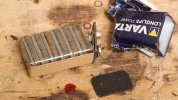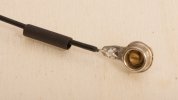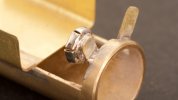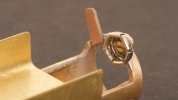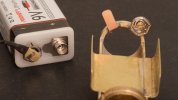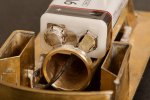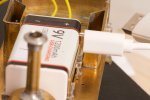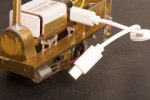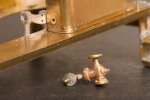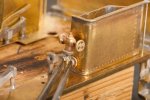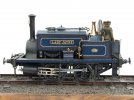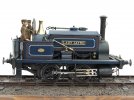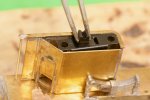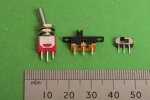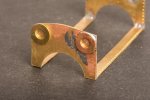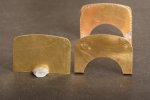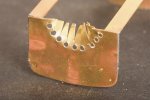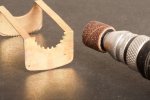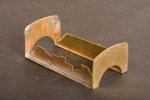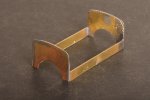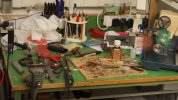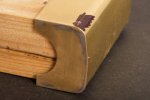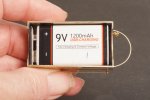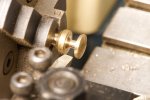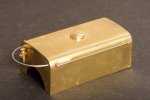Richard Gawler
Western Thunderer
I think it is easy to get carried away with fears which turn out to be unfounded. Years ago I put a crossbow bolt through a phone battery (bolt launched at about one metre distance) to see what happened, and the result was absolutely nothing. Just a neat and clean installation of bolt into battery. I gave it my boss to remember our mutual frustration with the standards at the time, I took it to him in Edinburgh by train because I thought the security people at Stansted might kick up a fuss.
I bought my PP3 batteries as a pair. I could try to destroy one to see what happens. I have one those gas-powered weed killer lances, maybe put one of the batteries on the patio and have a play. But the battery weighs about 22 grams, so if we allow 10 grams for the terminals, circuit board, electrodes and housing there is only 12 grams of electrolyte. I am in Essex and even if I can get some action, it won't be visible in Kent.
The housing is in two parts, a sealed part with the electrolyte and an open part with the USB port. I'll be working at the USB port end.
So I suggest, relax. Perhaps with a suitable book:
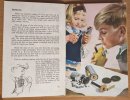
This is in one of my favourite books from when I was a kid: "Magnets, Bulbs and Batteries", a Ladybird book.
I didn't feel much of a tingle so I tried putting the carbon rod into my mouth, complete with its coating of electrolyte, to see if my saliva would make some electricity. I ran to the bathroom and washed out my mouth for ages, I thought I was going to die.
I bought my PP3 batteries as a pair. I could try to destroy one to see what happens. I have one those gas-powered weed killer lances, maybe put one of the batteries on the patio and have a play. But the battery weighs about 22 grams, so if we allow 10 grams for the terminals, circuit board, electrodes and housing there is only 12 grams of electrolyte. I am in Essex and even if I can get some action, it won't be visible in Kent.
The housing is in two parts, a sealed part with the electrolyte and an open part with the USB port. I'll be working at the USB port end.
So I suggest, relax. Perhaps with a suitable book:

This is in one of my favourite books from when I was a kid: "Magnets, Bulbs and Batteries", a Ladybird book.
I didn't feel much of a tingle so I tried putting the carbon rod into my mouth, complete with its coating of electrolyte, to see if my saliva would make some electricity. I ran to the bathroom and washed out my mouth for ages, I thought I was going to die.

